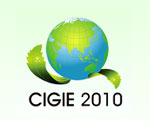Green energy sparks Tibetans' daily lives
(Xinhua)
2011-05-20 14:17
|
|
LHASA-- When Lhapa puts his hands on the steering wheel and cannot turn his prayer wheel, solar energy turns the prayer wheel for him.
Powered by a four-centimeter-long, two-centimeter-wide solar battery, a 15-cm-high golden prayer wheel mounted to the dashboard steadily whirls and sends out prayers to Buddha.
"It is very cheap, 30 yuan ($4.4). You can buy it at any booth on the street," said Lhapa, who lives in Lhasa.
"You will find solar power everywhere in Lhasa," he said.
In a neighborhood in Lhasa's western suburb, almost every courtyard home is equipped with a solar-powered water heater.
| ||||
He also installed a solar-powered stove in his courtyard.
"The stove is much more efficient than the old stove fueled by dried yak poo. It takes about 20 minutes to braise beef," he said.
About 395,000 solar-powered stoves have been used by Tibetans, according to the government.
At the home of Migmar, Kelsang Namgyal's neighbor, a solar-fueled heater has replaced the air-conditioner and electronic heater.
In recent years, Tibet has been working to develop and implement green energies such as solar, wind and bio-fuels.
"Tibet has the richest solar energy in China and one of the richest in the world. The region receives about 3,000 hours of sunshine annually on average," said Ma Shengjie, director of the science and technology department of the Tibet autonomous region government.
"With the government's efforts in the past few years, Tibet has led the application of solar energy in China," Ma said.
At a village in Medrogungkar County, Pasang has equipped himself with a solar generator to light his tent when he herds the cattle at the summer ranch.
"The generator weighs about 5 kg. After charging it for a whole day, it will power two lamps for a night," he said.
In the mountainous, high-altitude regions of northern and western Tibet, the government has widely promoted passive solar building designs. The windows, walls and floors of a structure are designed to collect, store and distribute solar energy in winter and reject it in summer with higher efficiency than ordinary solar structures.
In a passive solar structure, the day temperature can be 10 degrees Celsius higher than outdoor in the winter, meeting the needs of a school building, Ma said.
A passive solar house is also cheaper than active solar houses which are equipped with mechanical or electrical devices to increase the efficiency of solar energy.
The cost of updating a house with passive solar building designs is equal to 20 percent of the expense of building a house, Ma said.
According to the government, Tibet has introduced passive solar buildings with an area of 400,000 square meters.
To date, the capacity of photovoltaic power plants in Tibet totals 9 megawatts (mW), accounting for 13 percent of the national volume.
Meanwhile, more and bigger photovoltaic power plants are on the way.
A photovoltaic power plant with a capacity of 10 mW has been under construction at Yang, about 90 km from Lhasa, since March with an investment of 220 million yuan.
The construction of a photovoltaic power plant with a capacity of 30 mW in Xigaze, 250 km from Lhasa, also started in March and another one with a capacity of 2,000 kilowatts (kW) will be built in western Tibet's Nari this year, Ma said.
Tibet also plans to build a wind power plant with a capacity of 50 mW in Nagqu in northern Tibet in 2015, he said.
Additionally, the government plans to invest about 1.06 billion yuan to help rural residents build firedamp facilities from 2008 to 2015, he said.










